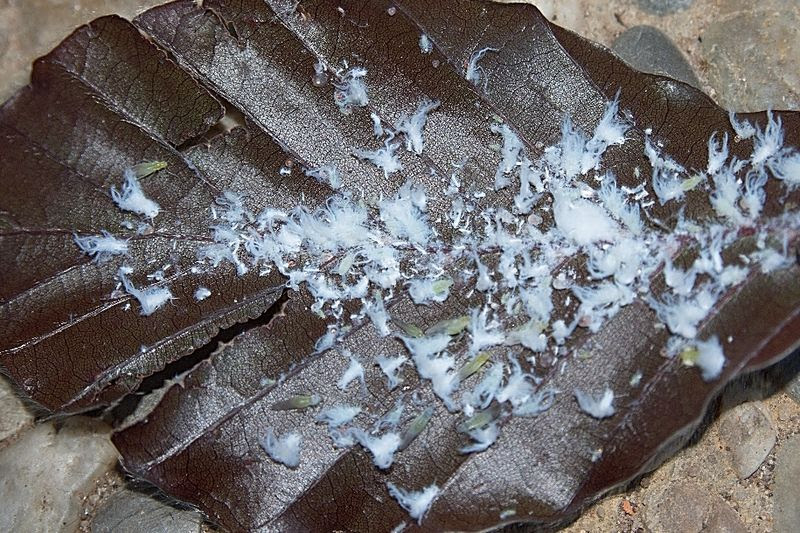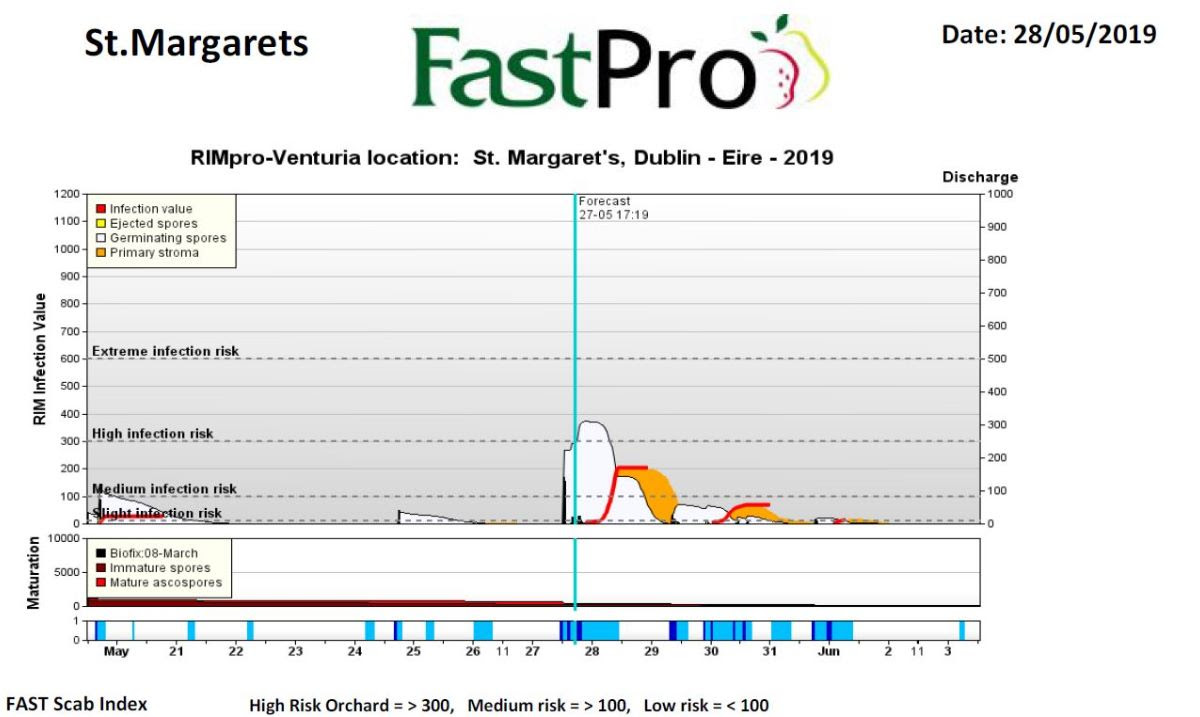Keep up-to-date with the latest pesticides new by visiting the Teagasc pesticide blog.
Dr. Michael Gaffney, Teagasc Entomologist has reported the start of the seasonal influx of Diamond Back Moth (DBM). “Diamond Back Moths have now arrived at our monitoring plots in Ashtown and Kinsealy in North Dublin. This migration seems to be coming from Scandinavia, through the UK (reports of sightings in Lincolnshire late last week). While the numbers observed seem low, the continued good weather this week may see an increase in population. It would be advisable for all brassica growers to check crops and take appropriate control measures. Monitoring these moths is relatively easy, as they move quickly up off the foliage when disturbed by people walking through the crop. They can be identified by the white markings on their back (picture below), thought to be diamond in shape”. The source of the pest population is important as some are resistant to pyrethroids e.g. Deltamethrin and Lambda Cyhalothrin. Good alternative would include Bacillus thuringiensis or Indoxocarb. There are a small number of ornamental plants that are attacked by DBM; these include Aubretia, stock and wallflowers.
You can see the latest Teagasc Pest updates for weeks 17 & 18 here

Woolly Aphid
Reports are coming in again of woolly aphids on beech – aswell as some late frost damage. Natural predators that control aphids and help to check population levels include: Earwigs, ladybirds and the parasitic wasp Aphelinus mali.
Best practice for control:
- Good coverage is essential; higher volume sprays are likely to give best results. Use of an appropriate wetter should help.
- High volume sprays of fatty acids maltodextrin (Majestic) are least harmful to the environment and may suit public sites/ stud farms etc. Most effective at low levels of infestation. (Note not approved for apples)
- Pesticides must penetrate past the waxy fluff over the colony, to be effective.
- Suggestions of ‘pre-treatment’ of Epsom Salts (magnesium sulphate) at 12kg-15kg/ha to soften the waxiness, applied some 48 hours ahead of the scheduled insecticide.
- Contact me for advice on suitable plant protection products

 FastPro and RimPro modles predict scab and powdery mildew in apple trees. The information is very useful to ornamental Malus growers also. Contact me if you would like to get regular email updates.
FastPro and RimPro modles predict scab and powdery mildew in apple trees. The information is very useful to ornamental Malus growers also. Contact me if you would like to get regular email updates. Mildew & Botrytis
Mildew & Botrytis
With cool temperatures and low light conditions forecast to persist for the next week, conditions will be ideal for Downy mildew to develop in the field and botrytis under protection. Powdery Mildew has been seen already during warmer weeks in May.
Downy Mildew
This disease favours cool and humid conditions; wet leaves in poorly ventilated areas are ideal for it to take hold. It will be familiar to you if you leave basil plants in a plastic sleeve for too long. Its recognised by white/grey felting on the underside of the leaf, the top of the leaf can show signs; yellowing or purple and eventually death of the leaf section. Hosts of various species of downy mildew include; Coleus, Impatiens, Alysum, Digitalis, Verbena, Veronica, Geranium, Argyranthemum. etc.
Prevention is by eliminating the favourable conditions; increase ventilation, reduce water on leaves to a minimum, good hygiene and house keeping to remove sources of inoculum.
Control options begin with prevention rather than curing the disease. There is no one size fits all for plant protection products, what works well for one strain of the mildew may not work well for another. There are no established biocontrol options.
Powdery Mildew
There are a number of different species of fungi that cause powdery mildew however they all favour warm, dry weather and require humid conditions initially to establish. Teagasc use a disease modelling programme, RimPro (see above), for top fruit and it has been predicating high disease pressure from powdery mildew in previous weeks.
Powdery mildew can be recognised by white or off-white fungal growth usually on the upper surface of leaves but can also be found on stems, flowers and lower leaf surfaces. It affects a wide range of plants including; Acer, Aster, Crataegus, Salvia, Spirea, Phlox, Quercus, Roses, and Prunus. Perennials include Aster, Monarda, geranium, Phlox, Salvia, Verbena etc.
Prevention– good growing conditions that reduce humidity, adequate plant spacing and ventilation in glasshouse/polytunnels, will help to prevent powdery mildew developing. AQ 10 a biopesticide may be useful as a protectant especially in protected environments. In soft fruit production silicone via fertigation systems has been seen to reduce the susceptibility of strawberries to Podospharea aphanis. Some sulfur products are available as preventative fungicides.
Control – where Mildew is present in a crop some knock down will be required. Potassium bicarbonate (e.g. K50) is useful in protected environments. SB Plant Invigorator is well established in use and is labelled for the control of Powdery mildew. Good coverage is essential, a wetter such as Silwet should help.
There are a wide range of suitable fungicides. Spray programmes can be as close together as every 7 days depending on disease pressure, weather conditions and product. Always follow the label instructions.

Botrytis
This disease also known as grey mould prospers in cool, humid conditions, not dissimilar to those suited to downy mildew. The very obvious fluffy grey-brown is seen on stems, leaves fruit and flowers. Ajuga, Paeonia and Primula are amongst many plants that are host to the disease.
Control of climate and hygiene are the best routes to prevent Botrytis. The disease easily enters plants via damaged points e.g after pruning or taking cuttings. Excellent air circulation, removal of dead leaves/fruit and good hygiene will help to reduce the development of botrytis.
Biological control is well established using the likes of Serenade and Prestop.
There are a wide choice of suitable fungicides. IR4 in USA has completed a good efficacy summary of Botrytis control products (pdf)
Teagasc Advisory – Nursery Stock & Ornamentals Newsletter May 2019



